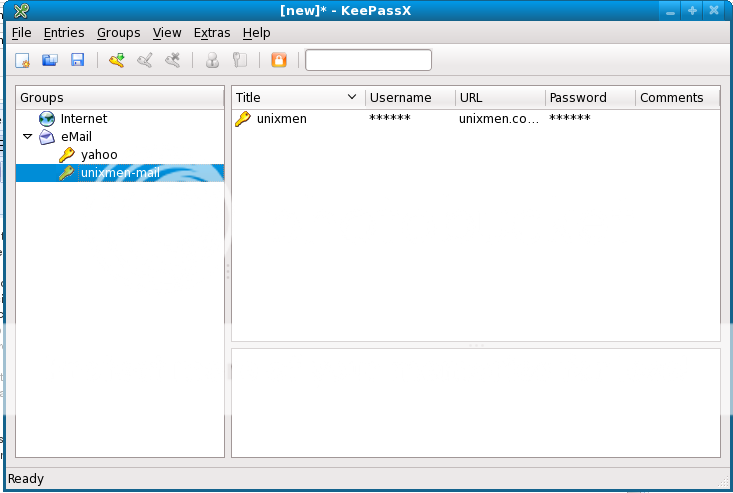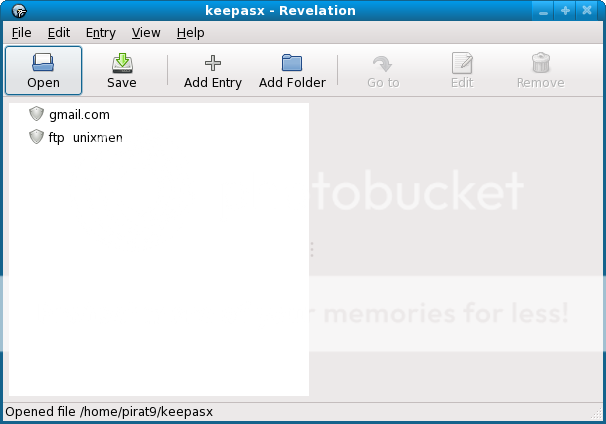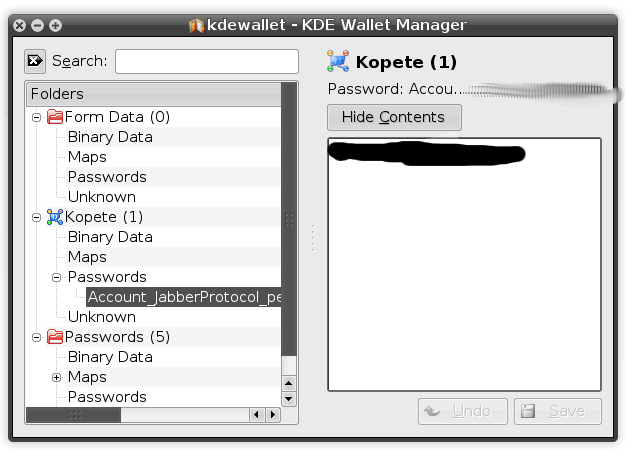A password manager is software that helps a user organize passwords and PIN codes. The software typically has a local database or files that holds the encrypted password data. Many password managers also work as a form filler, thus they fill the user and password data automatically into forms. These are usually implemented as a browser extension.
Password managers come in three basic flavors:
- Desktop – desktop software storing passwords on a computer hard drive.
- Portable – portable software storing passwords and program on a mobile device, such as a PDA or smart phone. (U3 and similar).
- Web based – Online password manager where passwords are stored on a provider’s website.
1-KeePassX
KeepassX is an application for people with extremly high demands on secure personal data management. It has a light interface, is cross platform and published under the terms of the GNU General Public License.
KeePassX saves many different information e.g. user names, passwords, urls, attachments and comments in one single database. For a better management user-defined titles and icons can be specified for each single entry. Furthermore the entries are sorted in groups, which are customizable as well. The integrated search function allows to search in a single group or the complete database.
KeePassX offers a little utility for secure password generation. The password generator is very customizable, fast and easy to use. Especially someone who generates passwords frequently will appreciate this feature.
The complete database is always encrypted either with AES (alias Rijndael) or Twofish encryption algorithm using a 256 bit key. Therefore the saved information can be considered as quite safe. KeePassX uses a database format that is compatible with KeePass Password Safe. This makes the use of that application even more favourable.

2- Revelation
Revelation is a password manager for the GNOME desktop, released under the GNU GPL license. It stores all your accounts and passwords in a single, secure place, and gives you access to it through a user-friendly graphical interface.
Clone this repository

3- MyPasswordSafe:
MyPasswordSafe is a straight-forward, easy-to-use password manager that maintains compatibility with Password Safe files. MyPasswordSafe has the following features:
- Safes are encrypted when they are stored to disk.
- Passwords never have to be seen, because they are copied to the clipboard
- Random passwords can be generated.
- Window size, position, and column widths are remembered.
- Passwords remain encrypted until they need to be decrypted at the dialog and file levels.
- A safe can be made active so it will always be opened when MyPasswordSafe starts.
- Supports Unicode in the safes
- Languages supported: English and French

4-KDE Wallet Manager
KDE Wallet Manager is a tool to manage the passwords on your KDE system. By using the KDE wallet subsystem it not only allows you to keep your own secrets but also to access and manage the passwords of every application that integrates with the KDE wallet.
The latest stable release is version 1.4, included in KDE 4.3. KDE Wallet Manager is a free and open source software, available for Linux and similar operating systems under the GNU General Public License (GPL), Version 2.

source: google
This article is actually remarkable one it helps many new users that desire to read always the best stuff. lastpass
ReplyDelete